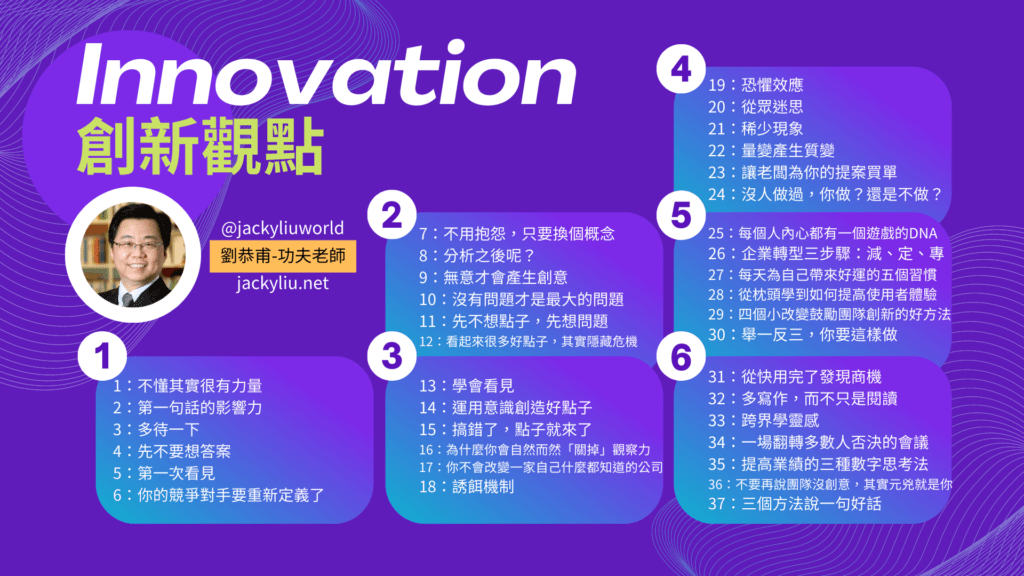好創意的來源其實是先不要想答案先想好問題
長期以來我們的教育體系,習慣出了很多題目讓我們去解題,但很少訓練我們「如何問對問題」。
有一家咖啡廳,業績不太好,老闆希望大家想想辦法「如何提高業績?」於是員工開始想出各種辦法,例如降價等等,實施了一陣子還是成效不彰,後來有一位員工提出一個問題「我們可以用什麼方法讓店面變得更有趣?」結果引發大家熱烈的討論,想出非常多好辦法,果然提高了業績。
好創意的來源其實是,先不要想答案,先想好問題。
換一種方式問問題
例如:「如何提高品牌知名度?」我們可以換一種方式問問題
「怎麼讓客戶在用餐的時候想起我們?」
「怎麼讓客戶在想要旅行的時候想起我們?」
例如:「如何提高效率?」我們可以換一種方式問問題
「怎麼讓我們在出貨包裝的速度上由原來的每件30秒降低到每件20秒?」
例如:「如何提高客戶滿意度?」我們可以換一種方式問問題
「怎麼讓客戶在周六早上覺得打掃家裡變得很輕鬆?」
「怎麼讓客戶願意推薦我們?」
真正解決問題的好點子,往往不是先找解答,而是先找問題,因為問題的架構往往比解答更為重要。
今天,讓我們試著練習「先不要想答案,先想好問題」吧!
〈功夫創新觀點〉04
<Do not think answer first>
For a long time our educational system are used to provide a lot of problems for us to solve, but we were rarely trained on “How to ask the right questions.”
There is a cafe, performance is not very good, the boss wants everyone to think about ways to “How to improve performance?” So the staff began to come up with various ways, such as lower prices and so on, while the implementation is still ineffective, then there is a staff to make a question “what methods we can use to make the store more fun?” The results lead to a lively discussion, come up with a lot of good ways, finally lead to really improve the performance.
The source of good ideas, In fact, is the first not think the answer, first think of a good question.
For example: “How to increase brand awareness?” We can ask the question a different way
“How to make customers think of us at meal time?”
“How to make customers think of us when they want to travel?”
For example: “How to improve efficiency?” We can ask the question a different way
“How to let our original shipping packaging speed of 30 seconds per item down to 20 seconds per piece?”
For example: “How to improve customer satisfaction?” We can ask the question a different way
“How to make our customers feel quite comfortable while cleaning the house on Saturday morning?”
“How our customers are willing to recommend us?”
The really good ideas to solve the problem, more often is not find answer first, but find problem first, because how to ask a good question is often more important than the answers.
Today, let us try to practice, “Think of a good question first, but not to get answer first!”
<Kung Fu innovative ideas> 04

